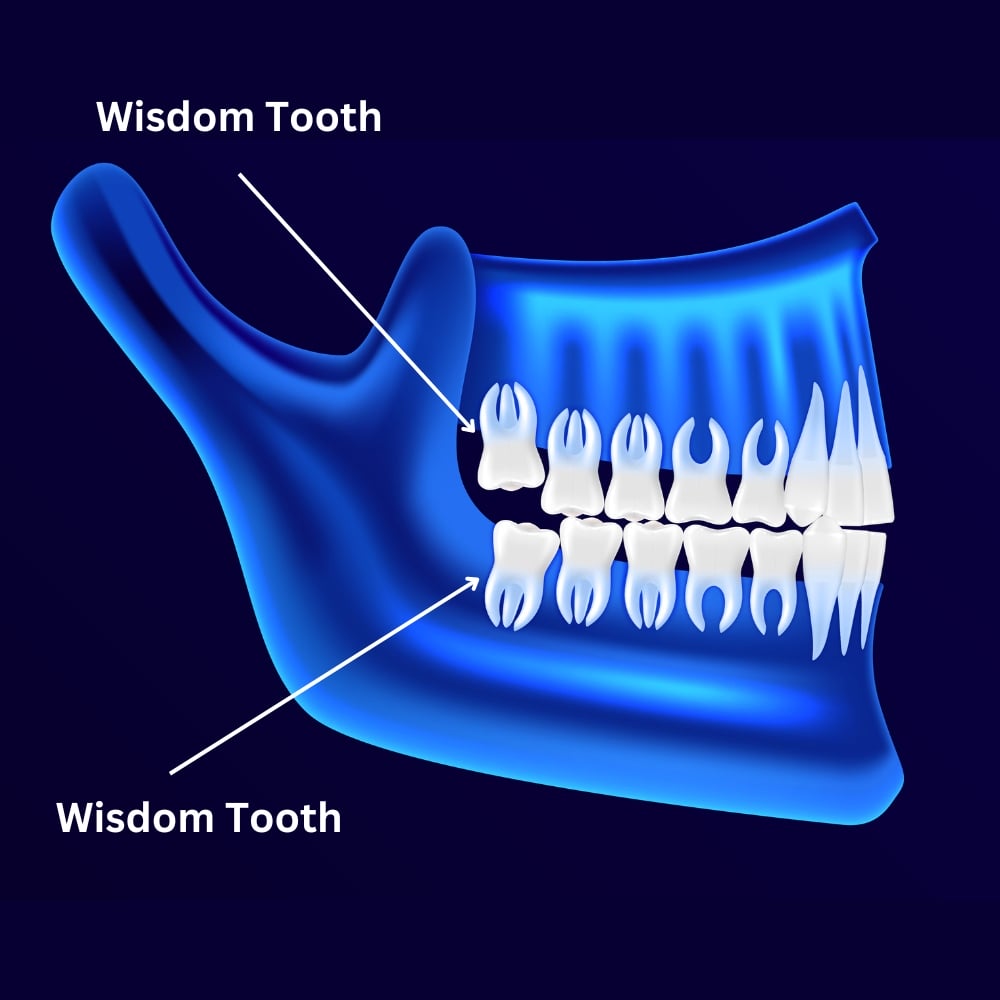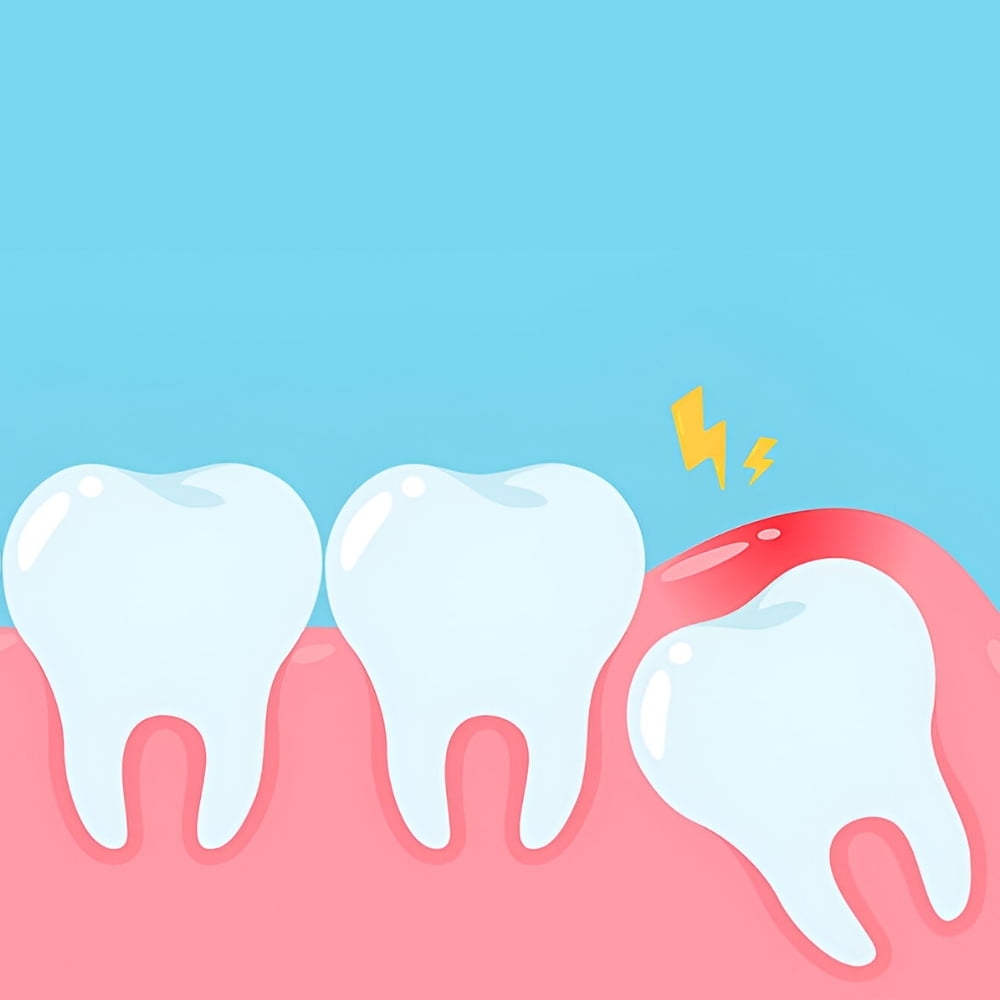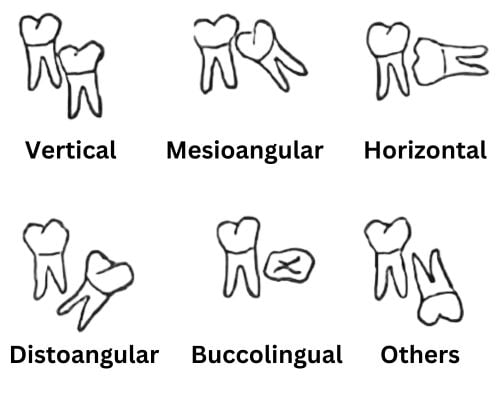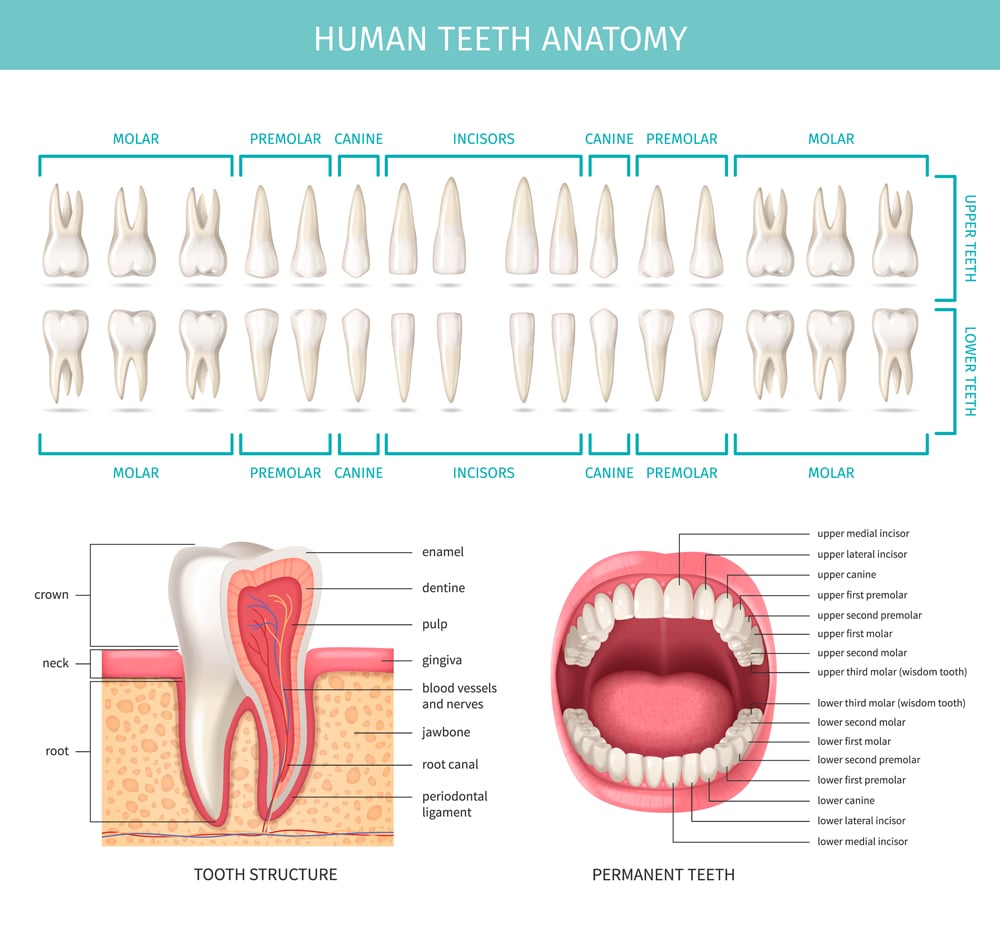Sign #1: Jaw Pain or Discomfort
Sign #2: Gum Swelling and Tenderness
Sign #3: Changes in Taste or Bad Breath
Sign #4: Difficulty Opening Your Mouth
Sign #5: Visible Wisdom Teeth / White Specks
Wisdom teeth. Many of us have a lingering dislike for these troublesome third molars, often associated with pain and dental visits.
But did you know that over 85% of people will need at least one wisdom tooth removed during their lifetime?
Understanding the signs and symptoms of wisdom teeth eruption can help you take proactive steps for your oral health.
Wisdom teeth are the last set of molars to appear, typically emerging during your late teens or early twenties.
Despite their name, they often cause more problems than impart wisdom.
Due to limited jaw space, many wisdom teeth become impacted, meaning they grow at awkward angles or only partially emerge from the gums.
Here are five common signs that your wisdom teeth might be making their debut. If you recognize these symptoms, a dental check-up can help you and your dentist plan the best course of action.
Signs That Your Wisdom Teeth Are Coming In

Sign #1: Jaw Pain or Discomfort
You might notice a dull ache, throbbing, or a feeling of pressure near the back of your jaw.
Wisdom teeth, while trying to find a place in your already crowded mouth, can put significant pressure on your jawbone and surrounding teeth.
This relentless force can create various levels of discomfort.
If this pain gets more persistent or severe, it could indicate complications like misalignment of your bite or damage to adjacent teeth.
Early intervention is important, so don’t hesitate to visit your dentist if you experience jaw pain for an extended period.
Sign #2: Gum Swelling and Tenderness

Another telltale sign of wisdom teeth coming in is swollen, red, or tender gums in the very back of your mouth.
As the wisdom teeth push through, they can irritate the surrounding gum tissue.
Sometimes, a flap of gum might partially cover the emerging tooth, which invites bacteria and food particles to become trapped, increasing the risk of infection.
Pay attention to the color and overall health of your gums.
Redness, inflammation, and bleeding are definite signals that something isn’t quite right, and your wisdom teeth might be the culprits.
Sign #3: Changes in Taste or Bad Breath
A lingering, unpleasant metallic taste in your mouth can be an unexpected hint that your wisdom teeth are breaking through.
Similarly, the difficulty of thoroughly cleaning around wisdom teeth that are only partially erupted creates an environment where bacteria can flourish, leading to bad breath.
While occasional bad breath might be temporary, if it persists alongside other symptoms, it could be an indication of a wisdom tooth infection, which shouldn’t be ignored.
Sign #4: Difficulty Opening Your Mouth

Swelling caused by erupting wisdom teeth can sometimes put pressure on the joints responsible for opening and closing your jaw.
In addition, if a wisdom tooth is growing at an unusual angle, it can hinder the smooth movement of your jaw.
If you struggle to open your mouth as wide as usual, or if the limitation gets worse over time, it’s a solid reason to schedule a consult with your dentist.
Left unaddressed, a restricted range of motion could lead to further complications.
Sign #5: Visible Wisdom Teeth / White Specks
In some cases, a wisdom tooth will partially break through the gum line, becoming visible at the very back of your mouth.
Don’t panic! Although some wisdom teeth emerge without issue, it’s essential to check their angle and surrounding gum tissue.
You might also notice small white specks appearing near your back molars. These could be the tips of your wisdom teeth pushing their way through the gums.
While not every wisdom tooth causes chaos, excellent oral hygiene is your superpower! Flossing thoroughly to the very back, regular dentist visits, and minimizing snacks around those third molars could make all the difference. Early X-rays help your dentist catch potential issues before they escalate.
The Hidden Dangers of Wisdom Teeth – Complications in Detail
- Pain Beyond Eruption: Even after initial wisdom teeth eruption, discomfort can persist. Impacted or partially erupted wisdom teeth often cause ongoing jaw pain or soreness. This can interfere with daily life, signaling a need for evaluation by a dentist.
- Pericoronitis: Gum tissue around a partially erupted tooth is the perfect breeding ground for infection. Symptoms of pericoronitis include red, swollen gums, pain, pus, bad breath, and even fever. Wisdom teeth infections need prompt dental care to prevent further complications.
- Tooth Decay & Adjacent Damage: Wisdom teeth are notoriously tricky to brush and floss due to their awkward location. This raises the risk of cavities not only in the wisdom tooth but also in the teeth around it. Dental crowns or even root canals may be required to save damaged teeth.
- Cysts and Other Issues: Occasionally, impacted wisdom teeth develop cysts in the jawbone, potentially weakening the bone or damaging nerve roots. In some cases, wisdom teeth crowding can undo prior efforts of orthodontic treatment, especially when they appear later in life (adult teething).
Some lucky folks have roomy jaws and wisdom teeth that erupt in perfect alignment,” explains Dr. Jacob. “If there’s no pain, they fit well, and cleaning them is easy; watchful waiting might be the approach. That’s why thorough exams are key!
Management Options
- Monitoring: If wisdom teeth come in straight, positioned properly, are easily cleaned, and your dentist sees no complications arising, regular checkups may be the safest choice. X-rays help dentists track any changes, potentially catching problems early.
- Wisdom Teeth Extraction: Surgical removal (wisdom teeth extraction) is typically recommended for impacted wisdom teeth, infection, persistent pain, or when their presence presents a high risk for damaging other teeth. Your dentist or oral and maxillofacial surgeon will utilize sedation or anesthesia and explain the aftercare needed to promote healing.
- Post-Extraction Care: After your wisdom teeth are removed, expect some minor bleeding and swelling. Your dental team will offer personalized instructions, likely including pain management, salt water rinses, eating soft foods for a while, and follow-up visits. In complex cases, bone grafts or gum grafts might be performed for optimal healing.
Post-Extraction Care
- Bleeding and Swelling: The first 24-48 hours might involve some bleeding and swelling. Here are essential tips to minimize discomfort:
- Gently bite on gauze after tooth removal (your dentist will advise how long)
- Apply ice packs for swelling (20 minutes on, 10 minutes off)
- Elevate your head with pillows at night
- Pain Management: Your dentist will provide instructions on pain relief. Options often include over-the-counter medication like ibuprofen or acetaminophen or stronger prescriptions, as needed.
- Diet Matters: For the first few days, stick to soft, cool foods that don’t require much chewing:
- Smoothies, yogurt, mashed potatoes, soup, applesauce, ice cream
- Avoid hot food and drinks as they can dislodge blood clots
- Skip anything hard, crunchy, or sticky – no chips or popcorn!
- Oral Hygiene (But Gently):
- After 24 hours, rinse your mouth very gently with salt water (1/2 teaspoon salt in a glass of warm water) several times a day, especially after meals.
- Brush your remaining teeth cautiously, avoiding the extraction site.
- Know When to Worry: While some discomfort is normal, contact your dentist if you experience:
- Increasing pain after 2-3 days
- Excessive bleeding
- Fever or signs of infection
- Trouble swallowing or breathing

When Wisdom Teeth are NOT a Problem: There are scenarios where wisdom teeth erupt normally without causing any discomfort or crowding other teeth.
If a wisdom tooth comes in fully, positions itself correctly, and is easily cleaned, you might not need any dental intervention.
Wisdom teeth aren’t just about pain. While I was waiting for my wisdom tooth appointment all those years ago, I saw posters warning how wisdom teeth can cause problems like cavities, gum disease, and even cysts.
That’s why I try to stay vigilant with regular checkups, fluoride rinses, and – who am I kidding – my electric toothbrush is my bestie!
A little extra effort now may prevent bigger procedures like root canals or dental crowns in the future.
We don’t live in a world of perfect smiles, and I get it.
Whether it’s teeth whitening or white fillings, or if you face more complex needs like dental implants or oral and maxillofacial specialty care, family dentistry practices offer a range of solutions for families at every stage.
While wisdom teeth often have a bad reputation, not everyone needs them removed!
If your wisdom teeth emerge fully, fit comfortably in your mouth, and are easy to keep clean, your dentist might recommend keeping them.
Regular checkups will help your dentist monitor their progress and ensure they remain healthy.
FAQs about Signs That Your Wisdom Teeth Are Coming In
At what age do wisdom teeth come in?
Wisdom teeth generally erupt in the late teens to early twenties, but they can be unpredictable, sometimes surfacing a little earlier or even much later in life.
Do I need to have my wisdom teeth removed?
This depends on many factors, like the tooth’s angle, how much space is available in your jaw, and whether it puts you at risk for dental problems. Your dentist is the best person to make that determination.
What happens if I ignore these signs?
Delaying dental care when the signs of wisdom teeth eruption appear can lead to complications like pain, infection, damage to neighboring teeth, and even misalignment of your bite.
Can wisdom teeth grow sideways?
Absolutely! They often grow at odd angles, including completely horizontally. This is called impaction, and your dentist will track whether this type of positioning increases your risk of problems.
Can I get a wisdom tooth infection after extraction?
While uncommon, post-extraction infections are possible. Signs include increasing pain, fever, or pus near the extraction site. Immediately contact your dentist for treatment. Following aftercare instructions, like salt water rinses, helps ensure quick and complete healing.
